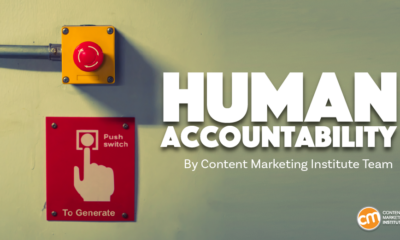TECHNOLOGY
How To Use Virtual Reality and Augmented Reality to Improve Driving Lessons

Driving schools employ virtual reality and augmented reality to reduce training time.
Almost everyone fails their first Driver’s Ed test – sometimes the first few times in a row.
This is a frustration that thousands of students go through before they finally pass their test, and this ends up compounding the cost (and increasing the time that it could take) for them to get on the road. It can chew into resources that new drivers don’t have, especially if they’ve just hit legal driving age; it’s even something that veteran drivers find themselves subject to when renewing their driver’s license.
This is both hard on students and teachers at the same time: Accidents related to driver’s education happens at the rate of a few thousand per year – and yes, it could be the result of a new, nervous driver who presses the gas instead of the brake or any number of other situations that they don’t know yet.
The use of virtual reality can transform how teachers and students approach driving education and practical situations. How would you like to know how you cope behind the wheel of a car before you have to get in a car at all?

It might sound futuristic to some, but the future has already been around for what’s pushing several decades. With the advent of cheaper VR hardware and software that’s easier to access for everyone, it could be a new way to train student drivers and drivers in specialized industries.
Here’s how VR could change the face of driver education.
Back to the Future: Remember the Arcade?
Virtual reality aided driving simulations have been around for a lot longer than most people would imagine. One of the most popular applications of it can be found right in the middle of the average gaming arcade in the form of driving or racing simulations. Did you ever play one of these? Some were high-speed and high-octane racing sims, while others had you drive a taxi around a map carrying passengers.
These examples were, at least more or less, pretty accurate driving simulations: Accidents could make some models jerk (thanks to hydraulic or spring systems), bikes and cars allowed you to lean in or feel the vibrations of the road.
Apply this to modern driver training and you’ll immediately see the potential benefits that it could hold. VR aided driver training is easier and cheaper than a real-life driving course for any driving situation you can imagine, including the training of stunt drivers for specialized situations and the training of everyday drivers for the purposes of K53.
Any teacher would rather see a student test their driving skills in a virtual environment before taking the student out on the road with a real vehicle – and the real potential for accidents or mishaps.
Virtual Reality Hardware: Accessible Tech Everywhere
The old gaming arcade machines described above were accurate simulations of real-life driving in many cases, but one thing they were not was cheap. There are many models available online, but they’re bulky – and thousands of dollars worth. It’s so expensive these days that you might as well buy a car instead of opting for one of these machines.
The introduction of cheaper virtual reality hardware has made these expensive, high-tech solutions easier to access: Those with more of a budget can pick up a version of the Oculus for a steal, while those who lack the budget can gravitate towards solutions like Google Cardboard and still have the basic benefits of VR.
Considering this factor, the question becomes, why not use it?

Real Skills in a Virtual Environment
The first obvious benefit of virtual and augmented reality solutions – for more than just driver training, but especially for it at the same time – is the fact that it teaches real skills in a virtual environment.
This is one potential way to rid a situation of the first-time nervousness that makes many drivers fail their test, and there are also many other important benefits.
Just a few of them that can be named include:
- Practical familiarity with the controls of a vehicle before the need to get in one yet.
- Learning the rules of the road and how to react in basic situations minus the added stress of danger of real drivers around you.
- Developing a sense of the road before taking any real risks.
- A way to teach practical concepts like looking and turning before getting on the road.
- A way for teachers to evaluate students’ progress, usually by being able to view or playback the situation at hand for students to see where they might have gone wrong in the first place.
One more thing it can allow for is the creation of certain specific scenarios that are important for students to know how to respond to, but with the hopeful absence that the student ever has to see these kinds of situations in real life.
Driver training aided by virtual reality can be used to show a driver or student driver what would happen in the event of a rear, side or head-on collision (and how to practice evasive driving maneuvers in such an event). This could save lives: Lives of people behind the wheel lives of passengers and lives of countless people injured and killed in driving accidents every single year.
VR for K53 Driver Training
Virtual reality has the potential to make standard K53-based driver training easier, cheaper and more accessible for drivers all over the world.
It doesn’t just reduce costs for teachers and students, but it can also cut down on the time and resources that it will take to take someone from unfamiliar with basic or advanced driving to someone who is safer on the road.
As a subsequent result, applying VR to K53 driver training can also reduce the rate of accidents on the road every year by showing drivers how to react to real situations without the risk. This way, they know what to do if an accident ever happens to them.
Advanced Driving Skills
Roads would be safer if every driver were equipped with advanced driving skills, so why aren’t they? Virtual reality can bridge this gap and create a safer driving environment across the world for everyone. It also has the potential for training stunt or military, police and protective services drivers better.
VR could very well be the right road to take.
Source link
TECHNOLOGY
Next-gen chips, Amazon Q, and speedy S3

AWS re:Invent, which has been taking place from November 27 and runs to December 1, has had its usual plethora of announcements: a total of 21 at time of print.
Perhaps not surprisingly, given the huge potential impact of generative AI – ChatGPT officially turns one year old today – a lot of focus has been on the AI side for AWS’ announcements, including a major partnership inked with NVIDIA across infrastructure, software, and services.
Yet there has been plenty more announced at the Las Vegas jamboree besides. Here, CloudTech rounds up the best of the rest:
Next-generation chips
This was the other major AI-focused announcement at re:Invent: the launch of two new chips, AWS Graviton4 and AWS Trainium2, for training and running AI and machine learning (ML) models, among other customer workloads. Graviton4 shapes up against its predecessor with 30% better compute performance, 50% more cores and 75% more memory bandwidth, while Trainium2 delivers up to four times faster training than before and will be able to be deployed in EC2 UltraClusters of up to 100,000 chips.
The EC2 UltraClusters are designed to ‘deliver the highest performance, most energy efficient AI model training infrastructure in the cloud’, as AWS puts it. With it, customers will be able to train large language models in ‘a fraction of the time’, as well as double energy efficiency.
As ever, AWS offers customers who are already utilising these tools. Databricks, Epic and SAP are among the companies cited as using the new AWS-designed chips.
Zero-ETL integrations
AWS announced new Amazon Aurora PostgreSQL, Amazon DynamoDB, and Amazon Relational Database Services (Amazon RDS) for MySQL integrations with Amazon Redshift, AWS’ cloud data warehouse. The zero-ETL integrations – eliminating the need to build ETL (extract, transform, load) data pipelines – make it easier to connect and analyse transactional data across various relational and non-relational databases in Amazon Redshift.
A simple example of how zero-ETL functions can be seen is in a hypothetical company which stores transactional data – time of transaction, items bought, where the transaction occurred – in a relational database, but use another analytics tool to analyse data in a non-relational database. To connect it all up, companies would previously have to construct ETL data pipelines which are a time and money sink.
The latest integrations “build on AWS’s zero-ETL foundation… so customers can quickly and easily connect all of their data, no matter where it lives,” the company said.
Amazon S3 Express One Zone
AWS announced the general availability of Amazon S3 Express One Zone, a new storage class purpose-built for customers’ most frequently-accessed data. Data access speed is up to 10 times faster and request costs up to 50% lower than standard S3. Companies can also opt to collocate their Amazon S3 Express One Zone data in the same availability zone as their compute resources.
Companies and partners who are using Amazon S3 Express One Zone include ChaosSearch, Cloudera, and Pinterest.
Amazon Q
A new product, and an interesting pivot, again with generative AI at its core. Amazon Q was announced as a ‘new type of generative AI-powered assistant’ which can be tailored to a customer’s business. “Customers can get fast, relevant answers to pressing questions, generate content, and take actions – all informed by a customer’s information repositories, code, and enterprise systems,” AWS added. The service also can assist companies building on AWS, as well as companies using AWS applications for business intelligence, contact centres, and supply chain management.
Customers cited as early adopters include Accenture, BMW and Wunderkind.
Want to learn more about cybersecurity and the cloud from industry leaders? Check out Cyber Security & Cloud Expo taking place in Amsterdam, California, and London. Explore other upcoming enterprise technology events and webinars powered by TechForge here.
TECHNOLOGY
HCLTech and Cisco create collaborative hybrid workplaces

Digital comms specialist Cisco and global tech firm HCLTech have teamed up to launch Meeting-Rooms-as-a-Service (MRaaS).
Available on a subscription model, this solution modernises legacy meeting rooms and enables users to join meetings from any meeting solution provider using Webex devices.
The MRaaS solution helps enterprises simplify the design, implementation and maintenance of integrated meeting rooms, enabling seamless collaboration for their globally distributed hybrid workforces.
Rakshit Ghura, senior VP and Global head of digital workplace services, HCLTech, said: “MRaaS combines our consulting and managed services expertise with Cisco’s proficiency in Webex devices to change the way employees conceptualise, organise and interact in a collaborative environment for a modern hybrid work model.
“The common vision of our partnership is to elevate the collaboration experience at work and drive productivity through modern meeting rooms.”
Alexandra Zagury, VP of partner managed and as-a-Service Sales at Cisco, said: “Our partnership with HCLTech helps our clients transform their offices through cost-effective managed services that support the ongoing evolution of workspaces.
“As we reimagine the modern office, we are making it easier to support collaboration and productivity among workers, whether they are in the office or elsewhere.”
Cisco’s Webex collaboration devices harness the power of artificial intelligence to offer intuitive, seamless collaboration experiences, enabling meeting rooms with smart features such as meeting zones, intelligent people framing, optimised attendee audio and background noise removal, among others.
Want to learn more about cybersecurity and the cloud from industry leaders? Check out Cyber Security & Cloud Expo taking place in Amsterdam, California, and London. Explore other upcoming enterprise technology events and webinars powered by TechForge here.
TECHNOLOGY
Canonical releases low-touch private cloud MicroCloud

Canonical has announced the general availability of MicroCloud, a low-touch, open source cloud solution. MicroCloud is part of Canonical’s growing cloud infrastructure portfolio.
It is purpose-built for scalable clusters and edge deployments for all types of enterprises. It is designed with simplicity, security and automation in mind, minimising the time and effort to both deploy and maintain it. Conveniently, enterprise support for MicroCloud is offered as part of Canonical’s Ubuntu Pro subscription, with several support tiers available, and priced per node.
MicroClouds are optimised for repeatable and reliable remote deployments. A single command initiates the orchestration and clustering of various components with minimal involvement by the user, resulting in a fully functional cloud within minutes. This simplified deployment process significantly reduces the barrier to entry, putting a production-grade cloud at everyone’s fingertips.
Juan Manuel Ventura, head of architectures & technologies at Spindox, said: “Cloud computing is not only about technology, it’s the beating heart of any modern industrial transformation, driving agility and innovation. Our mission is to provide our customers with the most effective ways to innovate and bring value; having a complexity-free cloud infrastructure is one important piece of that puzzle. With MicroCloud, the focus shifts away from struggling with cloud operations to solving real business challenges” says
In addition to seamless deployment, MicroCloud prioritises security and ease of maintenance. All MicroCloud components are built with strict confinement for increased security, with over-the-air transactional updates that preserve data and roll back on errors automatically. Upgrades to newer versions are handled automatically and without downtime, with the mechanisms to hold or schedule them as needed.
With this approach, MicroCloud caters to both on-premise clouds but also edge deployments at remote locations, allowing organisations to use the same infrastructure primitives and services wherever they are needed. It is suitable for business-in-branch office locations or industrial use inside a factory, as well as distributed locations where the focus is on replicability and unattended operations.
Cedric Gegout, VP of product at Canonical, said: “As data becomes more distributed, the infrastructure has to follow. Cloud computing is now distributed, spanning across data centres, far and near edge computing appliances. MicroCloud is our answer to that.
“By packaging known infrastructure primitives in a portable and unattended way, we are delivering a simpler, more prescriptive cloud experience that makes zero-ops a reality for many Industries.“
MicroCloud’s lightweight architecture makes it usable on both commodity and high-end hardware, with several ways to further reduce its footprint depending on your workload needs. In addition to the standard Ubuntu Server or Desktop, MicroClouds can be run on Ubuntu Core – a lightweight OS optimised for the edge. With Ubuntu Core, MicroClouds are a perfect solution for far-edge locations with limited computing capabilities. Users can choose to run their workloads using Kubernetes or via system containers. System containers based on LXD behave similarly to traditional VMs but consume fewer resources while providing bare-metal performance.
Coupled with Canonical’s Ubuntu Pro + Support subscription, MicroCloud users can benefit from an enterprise-grade open source cloud solution that is fully supported and with better economics. An Ubuntu Pro subscription offers security maintenance for the broadest collection of open-source software available from a single vendor today. It covers over 30k packages with a consistent security maintenance commitment, and additional features such as kernel livepatch, systems management at scale, certified compliance and hardening profiles enabling easy adoption for enterprises. With per-node pricing and no hidden fees, customers can rest assured that their environment is secure and supported without the expensive price tag typically associated with cloud solutions.
Want to learn more about cybersecurity and the cloud from industry leaders? Check out Cyber Security & Cloud Expo taking place in Amsterdam, California, and London. Explore other upcoming enterprise technology events and webinars powered by TechForge here.
-

 MARKETING6 days ago
MARKETING6 days agoRoundel Media Studio: What to Expect From Target’s New Self-Service Platform
-

 SEO6 days ago
SEO6 days agoGoogle Limits News Links In California Over Proposed ‘Link Tax’ Law
-
SEARCHENGINES6 days ago
Daily Search Forum Recap: April 12, 2024
-

 SEO5 days ago
SEO5 days ago10 Paid Search & PPC Planning Best Practices
-

 SEARCHENGINES5 days ago
SEARCHENGINES5 days agoGoogle Core Update Volatility, Helpful Content Update Gone, Dangerous Google Search Results & Google Ads Confusion
-

 SEO7 days ago
SEO7 days agoGoogle Unplugs “Notes on Search” Experiment
-

 MARKETING6 days ago
MARKETING6 days ago2 Ways to Take Back the Power in Your Business: Part 2
-

 MARKETING4 days ago
MARKETING4 days ago5 Psychological Tactics to Write Better Emails















You must be logged in to post a comment Login